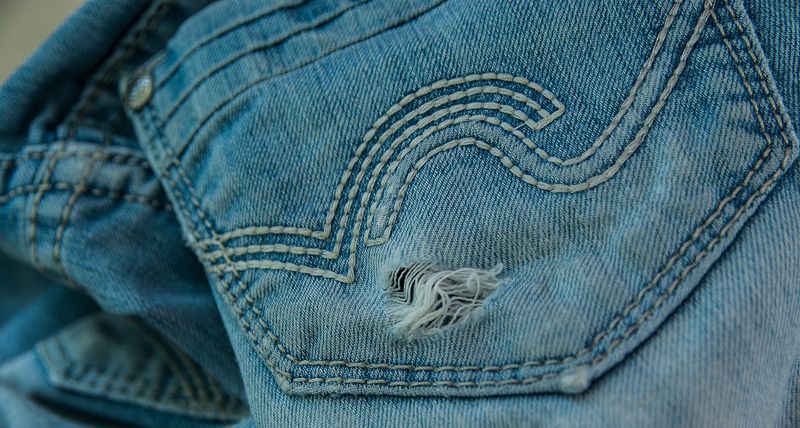The Importance of Sustainability in Denim
Denim's environmental concerns
Growing concern over the environmental and health impacts of textiles in general and denim, in particular, are putting pressure on companies to employ more sustainable production methods.
Every closet has at least one item of denim — whether it be blue jeans, a denim jacket, or vintage overalls that our grandparents used to wear. First used in the 19th century in the form of heavy work jeans, it has since become a wardrobe staple. From 200 pairs of jeans being sold, the number produced every year has risen to 6 billion. And at the rate the fashion industry is going, we’re on track to make billions more. But just how sustainable is denim production?
Blue is not so green
The fabric used to make denim clothing is cotton or some type of cotton blend. It is first harvested, separated into fibers, then put into bales. To make a pair of jeans, our denim fabric construction guide here on Textile School explains that the material undergoes a weaving process to make yarn, which is then dyed into indigo or other colors depending on the design.
The production of denim also involves several chemical washes to make them softer or more wearable and to eliminate shrinkage. Manufacturers can then put the clothing through different processes to produce specific styles, like distressed or faded jeans.

This production cycle of denim, from harvesting the raw material to packaging the final product, makes use of vast amounts of water. In fact, The Fashion Law’s rundown of water consumption in denim production shows that it takes 1,800 gallons of water just to grow the cotton that goes into a single pair of jeans. Moreover, 1.3 trillion gallons of water are used annually to dye fabric, including denim. This doesn’t even entail the water required to wash and produce special effects in a trendy pair of denim pants.
Aside from the enormous consumption of water, denim production is also a known culprit in water pollution. About 70% of Asia’s rivers and lakes are contaminated by garment manufacturing, of which denim is a major contributor. The production cycle involves heavy use of chemicals that produce run-offs and end up in bodies of water. These chemicals, which include lead and mercury, are also toxic to workers and communities where factories are set up. These are all issues that the textile industry is currently facing, as explored by our Textiles: Environmental Issues and Sustainability report.
Sustainable production of denim
Growing concern over the environmental and health impacts of textiles in general and denim, in particular, are putting pressure on companies to employ more sustainable production methods. One example of these environmentally responsible practices is using a micro-irrigation system that can save water usage in the early part of denim’s life cycle.
Textile manufacturers can also switch to organic pesticides to minimize the chemical exposure of workers and reduce toxic waste drained into bodies of water. As for achieving the classic denim look, C&EN reports that digital printing has become available, which can serve as a more sustainable alternative to dyeing and similar techniques. It can help solve the environmental impacts of dyeing fabric, such as producing toxic waste and human exposure to harmful chemicals.
But consumers also have a role in making denim more sustainable. Textile manufacturers can actively encourage their clients to opt for more eco-conscious fabrics from the multitude of brands that have started popping up. They can also promote ways to repurpose unused clothing, and Pretty Me’s guide to denim upcycling proves that there are many creative ways to do this. Old blue jeans can be turned into floor cushions, patchwork rugs or quilts, stylish purses, and even stuffed toys for children to enjoy.
The bottom line is that we all play a part in bringing sustainability to denim as it is traditionally harmful to the environment. Whether it’s finding creative uses for our old pair of work jeans or supporting sustainably made denim products, our individual choices will hopefully compel textile manufacturers to turn to more sustainable practices for the sake of our planet’s future.



Subhasish Bandyopadhyay Says “” name some sustainable implication and their function on denim washing””
Sustainable production of Denim is very interesting and need of this hour. As Textile professional and working experience in Denim Industry more than 10 years as President/ CEO , i found there are rooms for Innovations and producing Denim at much lower price with Sustainability. As an Example , Huge cotton consumption in making Denim can be replaced by a Special Yarn Structure which would be major portion Synthetics and covered by Cotton. Weaving speed and efficiency will improve significantly and Dyeing/ Finishing cost will reduce. Over all cost of Manufacturing of Denim Fabric will reduce significantly. Another way to introduce Digital Printing in Fabric and Garments which will appear as Blue Denim with special effects. If you are in Denim Business and would like to know more, please contact me on 9227440907.